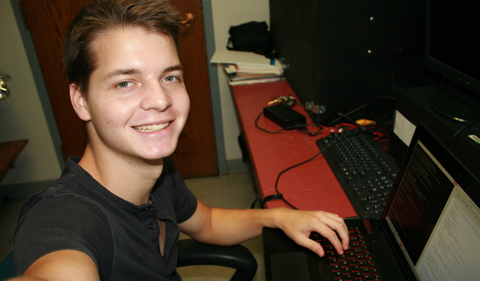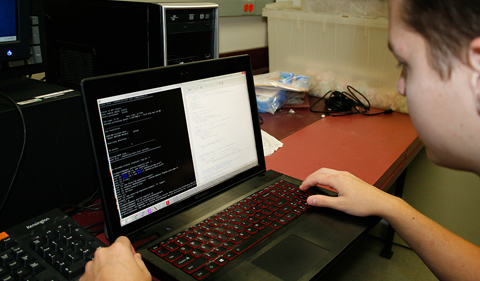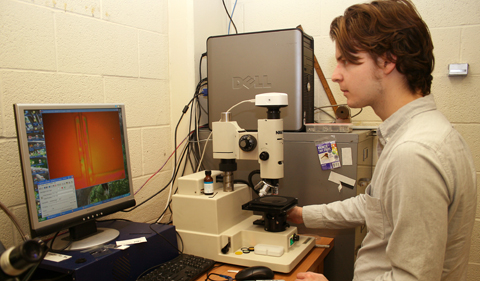By Miles Lindquist
B.S. HTC Astrophysics, Class of 2017
 I worked with Dr. Heather Crawford on developing a more realistic simulation of the GRETINA gamma-ray tracking detector array. This work is critical in understanding the full performance of the GRETINA detectors, which cover 1/4 of a sphere, and to predict the performance of a full sphere of detectors, the planned GRETA array. Ohio University is leading this effort, which is key in preparing for the proposal of GRETA.
I worked with Dr. Heather Crawford on developing a more realistic simulation of the GRETINA gamma-ray tracking detector array. This work is critical in understanding the full performance of the GRETINA detectors, which cover 1/4 of a sphere, and to predict the performance of a full sphere of detectors, the planned GRETA array. Ohio University is leading this effort, which is key in preparing for the proposal of GRETA.
A realistic simulation like I worked on will also help in the analysis of radioactive beam experimental data, where we detect gamma-rays in GRETINA to tell us about the structure of unstable nuclei that exist for only fractions of a second.
Dr. Crawford wanted me to use my programming experience to write code that takes a “perfect” simulation of the array and modifies the output to better match experimental data.
I analyzed and debugged a program used to augment simulation data of the GRETINA gamma-ray tracking detector array, then applied functions in the program to make the simulation data match the experimental data found from radioactive sources examined by GRETINA. One challenge I faced was learning how to use ROOT, an object-oriented computer program developed by CERN and completely unfamiliar to me. (CERN stands for the European Organization for Nuclear Research.)
 I managed to gain a working understanding of ROOT from a mixture of online guides, trial and error, and guidance from those who had been using it longer than I have. Dr. Crawford and I usually spoke a couple of times a week, both in person and on Skype when she was traveling. There was also frequent email correspondence.
I managed to gain a working understanding of ROOT from a mixture of online guides, trial and error, and guidance from those who had been using it longer than I have. Dr. Crawford and I usually spoke a couple of times a week, both in person and on Skype when she was traveling. There was also frequent email correspondence.
I improved my coding abilities in C++, a programming language, during my internship. One of the best things from the experience was the satisfaction of contributing to a project with a scope much larger than me.
Miles Lindquist – Intern with Dr. Heather Crawford – sophomore at Ohio University – Honors Tutorial College – astrophysics major



















Comments